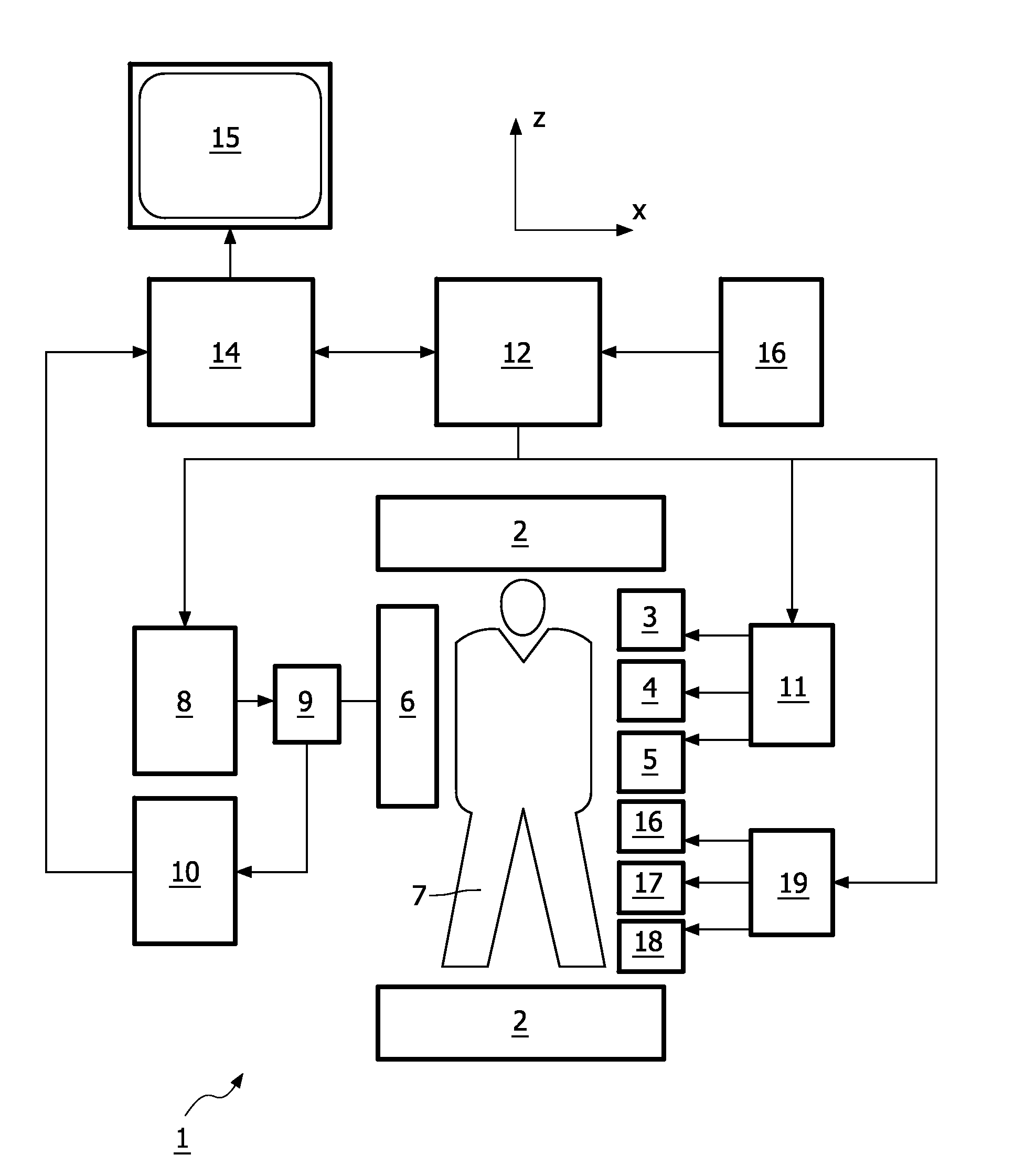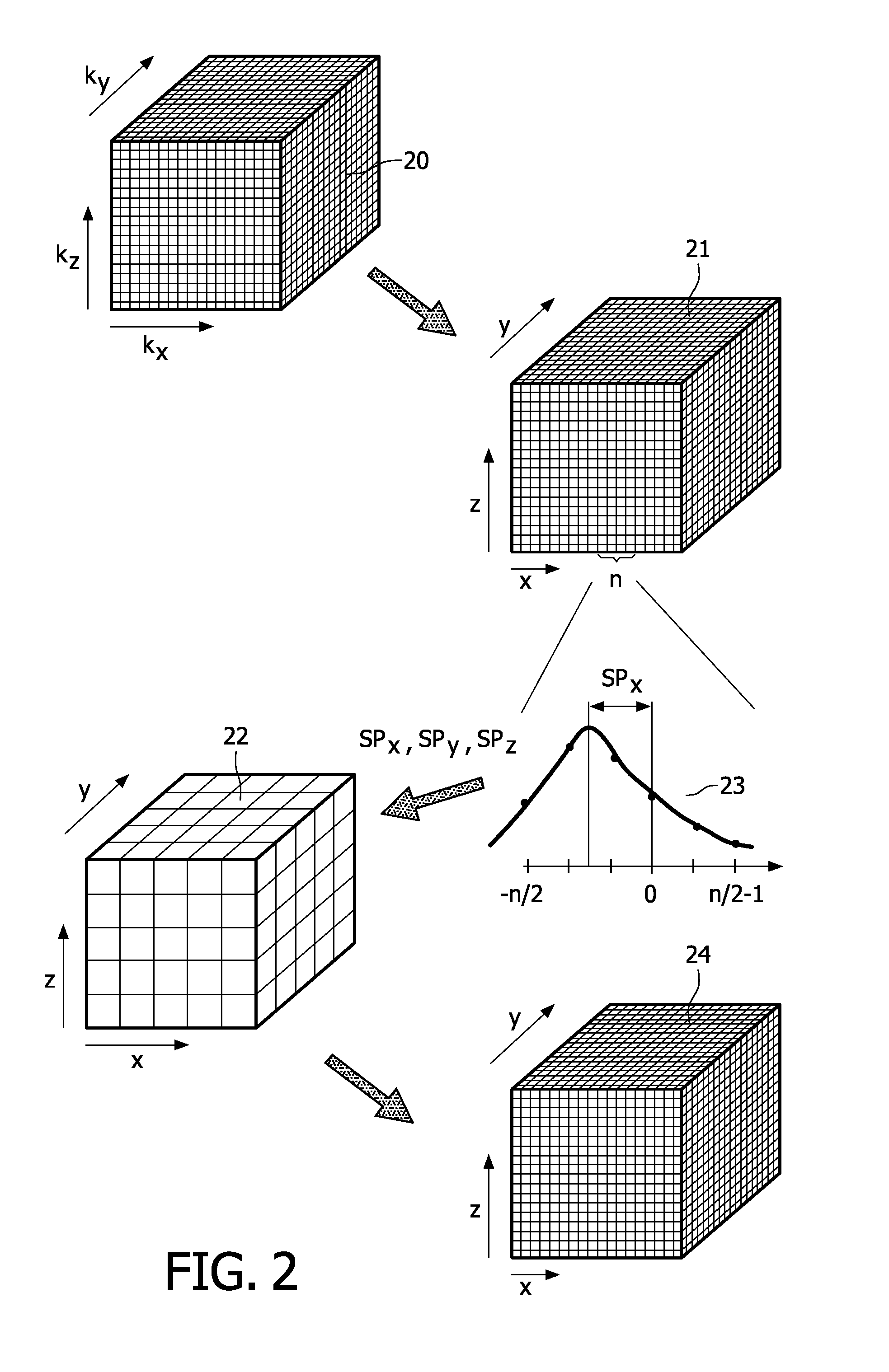Determination of susceptibility-induced magnetic field gradients by magnetic resonance
a magnetic field gradient and susceptibility-induced technology, applied in the field of magnetic resonance imaging, can solve the problems of time-consuming optimization procedures and laborious procedures, and achieve the effects of facilitating susceptibility imaging, optimal positive contrast, and positive susceptibility contras
- Summary
- Abstract
- Description
- Claims
- Application Information
AI Technical Summary
Benefits of technology
Problems solved by technology
Method used
Image
Examples
Embodiment Construction
[0028]In FIG. 1 an MR imaging device 1 in accordance with the present invention is shown as a block diagram. The apparatus 1 comprises a set of main magnetic coils 2 for generating a stationary and substantially homogeneous main magnetic field and three sets of gradient coils 3, 4 and 5 for superimposing additional magnetic fields with controllable strength and having a gradient in a selected direction. Conventionally, the direction of the main magnetic field is labelled the z-direction, the two directions perpendicular thereto the x- and y-directions. The gradient coils 3, 4 and 5 are energized via a power supply 11. The imaging device 1 further comprises an RF transmit antenna 6 for emitting radio frequency (RF) pulses to a body 7. The antenna 6 is coupled to a modulator 9 for generating and modulating the RF pulses. Also provided is a receiver for receiving the MR signals, the receiver can be identical to the transmit antenna 6 or be separate. If the transmit antenna 6 and receiv...
PUM
 Login to View More
Login to View More Abstract
Description
Claims
Application Information
 Login to View More
Login to View More - R&D
- Intellectual Property
- Life Sciences
- Materials
- Tech Scout
- Unparalleled Data Quality
- Higher Quality Content
- 60% Fewer Hallucinations
Browse by: Latest US Patents, China's latest patents, Technical Efficacy Thesaurus, Application Domain, Technology Topic, Popular Technical Reports.
© 2025 PatSnap. All rights reserved.Legal|Privacy policy|Modern Slavery Act Transparency Statement|Sitemap|About US| Contact US: help@patsnap.com



